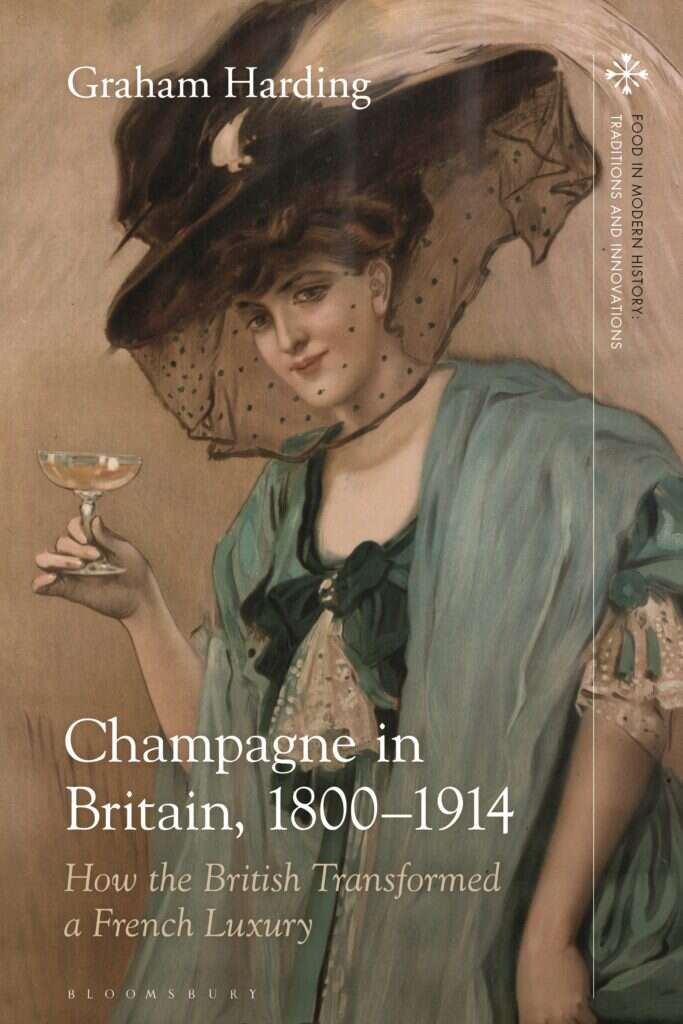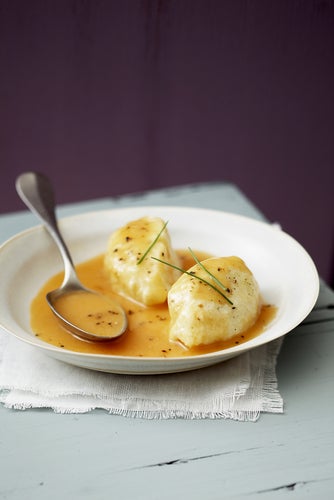
Michael Palij MW reviews Champagne in Britain, 1800–1914: How the British Transformed a French Luxury by Dr Graham Harding.
The consumption of Champagne has always been synonymous with signaling class and status, rather than a considered choice based on absolute quality. This is the central tenet of Dr Harding’s painstakingly researched Champagne in Britain, 1800–1914, published by Bloomsbury and the recent recipient of the OIV’s Prize for History. This accolade is well deserved: Harding’s research shines a light on the formative years of a wine that “has become the symbolic embodiment of moneyed celebration, luxury hedonism and elite status even amongst those who know little of wine.”
Champagne in Britain, however, is much more than merely a jolly canter through Champagne’s “glory years”; this retelling of the most famous wine’s first tentative steps on the road to becoming a global brand makes for fascinating reading. Historians will enjoy pegging the rise of Champagne’s fortunes to both that of the British Empire and the more general demographic trends of the Industrial Revolution. Marketeers will no doubt crack a wry smile at the early antics of the houses’ agents (including the indomitable Adolphe Hubinet, Pommery’s “man on the ground” for many years) as they attempted to influence their brand’s perception and the loyalty of their clientele. And for devotees of “luxurious hedonism,” it’s a lovely opportunity to set off on a journey, knowing that countless others have walked that way.
Champagne’s early success, according to Harding, can be attributed to three things: changing fashions and tastes, a deep sense of the brand’s “meaning,” and brand awareness.
Drinks consumption in the early 19th century witnessed a steep decline in the popularity of German wines as the UK’s fascination with residual sugar drew to a close: Hock was deemed too sweet. Curiously—as Harding drily notes—prior to 1817, Champagne was almost always sweet. It was routinely fortified with brandy, and then a generous dosage was added.
But the wily Champenois changed the style in line with shifting fashions, the chameleon skill to which Harding attributes much of the drink’s early success. After the Napoleonic Wars, spirits were “too strong,” and beer was “too vulgar” for the booming middle class enjoying the heyday of the British Empire. Even fortified wines, popular for the previous 150 years, were deemed “too dark.” Although styles within the Champagne category fluctuated wildly, they did so in step with whatever was à la mode and, in so doing, guaranteed that Champagne remained au courant as agents such as Adolphe Hubinet continuously fed back the latest craze.
Many of these changes in consumption (Harding notes a purple patch for Champagne consumption and awareness from 1850 to 1870) reflected a growing urbanization and general increase in living standards. As people moved into cities, so the hospitality industry grew. Social competition flourished alongside this in a cycle that Harding refers to as “consumption, display and re-comparison”; Champagne provided an ideal running mate for those on the way up.
Champagne therefore had meaning for the aspiring working classes, to whom the Victorians actively promoted the conceit that everyone should be able to afford life’s luxuries. For the middle class, it symbolized success (business or personal). Uniquely for an alcoholic drink, it also appealed to the gentry, for whom expanded trading routes meant that food and wine (along with clothes) were central to the quest for differentiation both within the home and outside.

“Dinner Champagnes” were marketed as the ideal accompaniment to food, and since it was never decanted, it was perfectly reasonable for the bottle to remain on display on the dining table. It was an added bonus that Champagne was a socially acceptable drink for women of all social classes.
By 1870, Champagne was not only very firmly established as a social marker and reflection of status but had also penetrated to the heart of the British middle class. It had become part of the ritual that confirmed success, as Harding notes:
Rituals are vital components […] that people use to confirm their identities. Rituals imply an audience, they are used for symbolic communication […]. Champagne had been part of the “extraordinary celebrations” of the wealthy […] but went on to be the essential adjunct to collective celebrations such as the opening of railways or the launching of ships […] but also to celebrations of self-interest.
Champagne’s moderate alcohol and inimitable bubbles were unquestionably natural attributes that helped broaden its appeal from music halls to sophisticated dinner parties (which were increasingly popular). Champagne was both versatile and classless.
Champagne brands and blends
As a brand, Champagne has few equals. In the 19th century, exportation in bottle was still relatively rare and, of course, meant that it could be trusted. British merchants (along with Dutch) had monopolized bulk shipments of wines and spirits for centuries. Champagne, however, changed all that. Many merchants tried to launch their own brands of Champagne, but most failed because Champagne was perceived as being sufficiently prestigious to warrant purchasing a brand.
“Real” Champagne therefore commanded a premium. In the 1860s and 1870s, there were frequent references to “manufactured” or “sham” Champagnes, and wine writers were quick to urge the trade to take the matter seriously. This, of course, played into the hands of the brand owners, who lost no time in reminding drinkers that an unknown brand of Champagne carried inherent risk and that, for an important occasion, such risks were unwise. Harding argues that:
Although the ambiguity of the usage of the term “brand,” which appears to have transitioned from a physical mark on a cork or a cask in the first half of the 19th century to an abstract concept in its own right by the 1860s, makes it hard to be precise, it appears that Champagne was the first luxury product to put branded status on the table. There were earlier branded food products (e.g. Burgess’ Anchovy Paste) but no evidence for their presence on a formal dinner table.
Not only was Champagne itself a brand, but within that category, different houses created their own brands with differentiation built on perceived quality (and therefore price). It is likely that there was no or little organoleptic hierarchy between the brands, but in another industry first, agents were employed specifically to popularize and promote particular houses. To Harding, the use of agents was critical:
The correspondence of Adolphe Hubinet and Conrad Reuss [Pol Roger] showed a constant preoccupation with not just how to defend and advance the principals’ brands but also what we would now call branding and marketing strategies […]. They appear to prefigure the strategies of modern scholars and practitioners of luxury marketing.
Range extensions were also part of Champagne’s bag of tricks. Blended variants (today’s NV Brut) signaled consistency and the reassuring values associated with a particular brand. A Vintage alternative catered to those looking for scarcity and hence a renewed portrayal of “wealth, status and privilege.” Single vineyards, such as Sillery, added another layer of implied class and wisdom on the part of the purchaser. Even phylloxera in 1890 played into the brand owners’ hands, since scarcity was then all the more real.
Champagne’s enduring achievement, however, is that, even when sales fell, prices did not. As a classic market leader, Champagne followed on the way down and led on the way up.
Although much has been written about Champagne and its history, Champagne in Britain, 1800–1914 is the first serious study to chronicle how Champagne—that most quintessentially French drink—was so successfully popularized by the British. In so doing, it raises issues of class, wealth, branding, and consumption—questions as relevant for today’s luxury-goods marketeer as they were 200 years ago.
—Champagne in Britain, 1800–1914: How the British Transformed a French Luxury by Dr Graham Harding is published by Bloomsbury Academic (310 pages; $120/$35.95; £90/£28.99).






